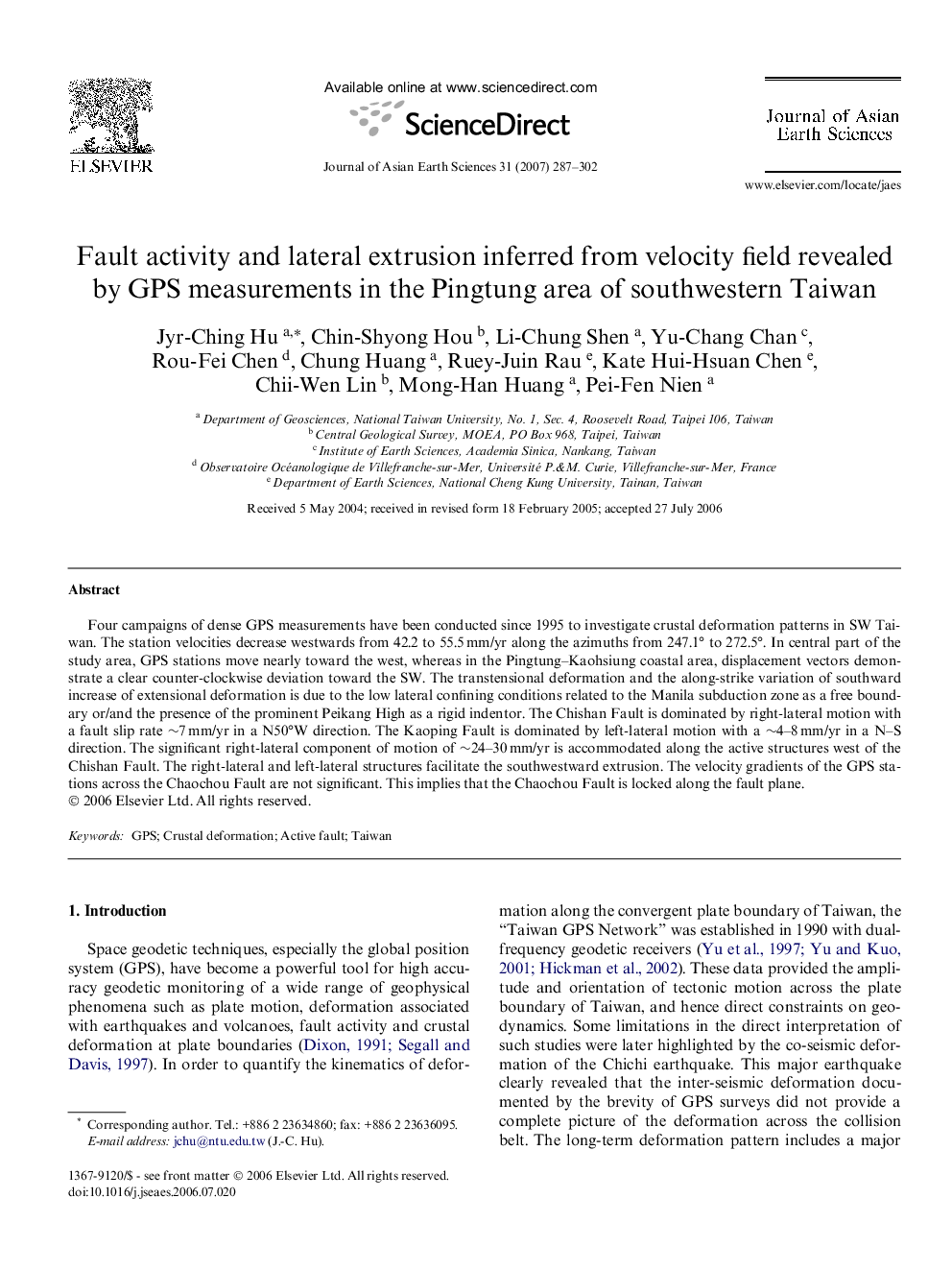| Article ID | Journal | Published Year | Pages | File Type |
|---|---|---|---|---|
| 4732731 | Journal of Asian Earth Sciences | 2007 | 16 Pages |
Four campaigns of dense GPS measurements have been conducted since 1995 to investigate crustal deformation patterns in SW Taiwan. The station velocities decrease westwards from 42.2 to 55.5 mm/yr along the azimuths from 247.1° to 272.5°. In central part of the study area, GPS stations move nearly toward the west, whereas in the Pingtung–Kaohsiung coastal area, displacement vectors demonstrate a clear counter-clockwise deviation toward the SW. The transtensional deformation and the along-strike variation of southward increase of extensional deformation is due to the low lateral confining conditions related to the Manila subduction zone as a free boundary or/and the presence of the prominent Peikang High as a rigid indentor. The Chishan Fault is dominated by right-lateral motion with a fault slip rate ∼7 mm/yr in a N50°W direction. The Kaoping Fault is dominated by left-lateral motion with a ∼4–8 mm/yr in a N–S direction. The significant right-lateral component of motion of ∼24–30 mm/yr is accommodated along the active structures west of the Chishan Fault. The right-lateral and left-lateral structures facilitate the southwestward extrusion. The velocity gradients of the GPS stations across the Chaochou Fault are not significant. This implies that the Chaochou Fault is locked along the fault plane.
